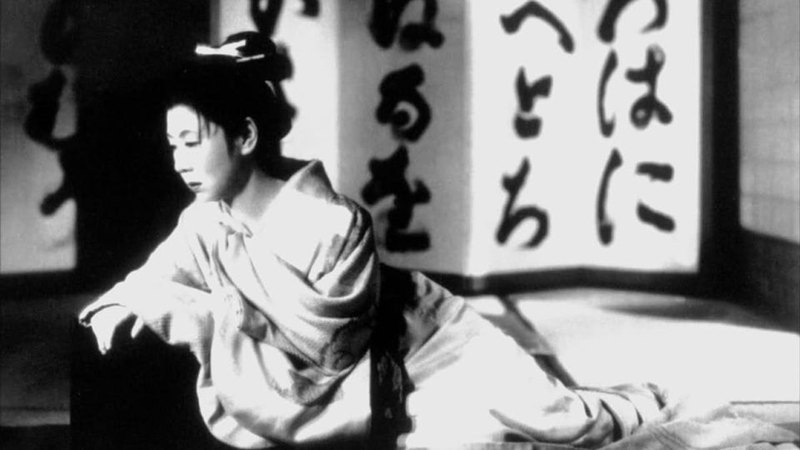The first Laserdisc movie I ever saw was at a friend’s house; it was Milos Forman’s 1984 adaptation of “Amadeus,” and it was spectacular, even on a relatively small, standard-def television. When Warners released the movie in a high-bit-rate, anamorphic widescreen DVD some years later, it looked even better. Now that it’s on high-definition Blu-ray, it’s obviously more impressive than ever, a must-buy for anyone interested in top-notch motion pictures.
There is no question “Amadeus” is among the most opulent films ever made, Forman shooting primarily in France, Austria, and the Czech Republic in many of the locations frequented by Mozart himself. It’s a remarkable achievement: The majority of the scenes take place indoors, with little physical action and virtually no special effects, yet the whole experience rivets our attention from first to last.
Peter Shaffer based the movie’s screenplay on his own stage production about the last decade of Johann Chrysostom Wolfgang Amadeus Mozart’s life, focusing on the musician’s rivalry with fellow composer Antonio Salieri. At the time the play and later the movie opened, the suggestions that Mozart was an immature buffoon and that Salieri may have poisoned him outraged many of Mozart’s fans but made for thoughtful and thought-provoking entertainment. Add to the movie’s gorgeous scenery, filmed in buildings like the Tyl Theater where Mozart actually conducted the première performance of “Don Giovanni,” a literate script, a host of talented actors, and some of the most beautiful music ever written, and the result is a combination that deserved the Oscars it received.
The film traces the fictional strife between Mozart and Salieri from about the time of Mozart’s marriage to Constanze (Elizabeth Berridge) to his premature death in 1791 at the age of thirty-five. Tom Hulce portrays the young composer as part childlike mischief-maker and part serious genius. Mozart’s real-life letters to his father and friends would indicate that he was, indeed, the jokester the story suggests. Even more impressive, however, is F. Murray Abraham, who won the Best Actor award for his role as the insanely jealous Antonio Salieri. There is no evidence actually to suggest that Salieri poisoned the younger man, but it makes for wonderfully dramatic conjecture.
Here’s the thing: One should not confuse “Amadeus” with anything like a biography. The movie is clearly a work of theatrical license, a highly fictionalized “what if” story. As such, it works on any number of levels. We feel sympathies for Mozart, for his wife, for his father, even for poor old Salieri, who, in the film, is a hardworking but largely mediocre composer constantly upstaged by the gifted, impulsive, inspired Mozart. According to Schaffer, Salieri’s frustrations lead him in later life to believe that he contemplated the unthinkable in murdering his young rival, yet in its favor the film never directly pins Mozart’s death on him, only implying his involvement.
Some thirty-two years after Mozart’s death, an elderly and forgotten Salieri, now in an insane asylum, tells his story to a young priest who has never heard of the old man’s music. Salieri was once the most famous composer in Europe, but the priest doesn’t recognize anything he plays on the piano installed in his cell. That is, until the old man plays a work that the priest declares is “charming…I didn’t know you wrote that.” “I didn’t,” responds Salieri. “THAT was Mozart.”
Mozart was able to improvise music on the spot better than Salieri could compose it through long, hard work. According to the story, Mozart was able to create whole symphonies, concertos, operas, and such in his head, which may, in fact, have been true. Writing the music down on paper was mere dictation, “scribbling” as Mozart called it. Yet for all his talent, not everyone in Mozart’s day appreciated him and his work, the Emperor Joseph II (wonderfully played by Jeffrey Jones), for example, contending that his operas contained “too many notes.”
Of course, no movie about Mozart would be complete without a good deal of the man’s actual music, and here Sir Neville Marriner and the Academy of St. Martin in the Fields provide excellent support. Indeed, the music pretty much dominates the film, sometimes overshadowing the characters themselves. Sir Neville is an old hand at Mozart, having made numerous recordings of the composer’s works, and his Mozart excerpts in the movie are a joy unto themselves. This is a film one can appreciate for its acting and for its visual splendor, to be sure, but also for the sheer exuberance of its music making.
What’s more, the Blu-ray disc features the Director’s Cut of the movie, using about twenty minutes’ worth of material never seen in its original release and bringing the film’s length to an exact three hours. One could argue that the film was already too long, and I am not convinced that adding more footage improves the story, but, trust me, even if you’re not into classical music, these hours still fly by. The additional scenes help to establish an even more-intense hatred, jealousy, and scheming on the part of Salieri, and in some instances reaffirm Mozart’s poor financial management. One newly added scene in particular, involving Constanze and Salieri, may turn heads. Let’s just say that if the director, the producer, and the writer approved of the added scenes, I’m not going to complain. One way or the other, “Amadeus” remains a great film.
Video:
The Warner Bros. video engineers bring the 2001 restoration to high-definition Blu-ray using a VC-1 encode and a dual-layer BD50. Forman shot the film in 35 mm Panavision, and WB exhibited it theatrically in 2.40:1-ratio 35 mm prints and 2.20:1-ratio 70 mm blow-ups. Here, we get the 2.40:1 dimensions, practically without blemish. The image is crisp, ultraclean, and ultra clear, the colors standing out richly and deeply against the white backgrounds that Forman so often chooses for his scenes. I’ve said this is an opulent film, and the disc displays the luxuriant hues in brilliant array.
The real test of the Blu-ray, however, came in the comparison with WB’s already fine, high-bit-rate anamorphic standard-def version. With the BD in a Panasonic BD50 and the SD upscaled in a Toshiba A-35, I put both discs on pause and compared the opening still shots from all forty-six scenes, back and forth. In not a single case did I prefer the standard definition, which comes as no surprise, although there were a couple of instances where the differences were quite small.
Generally speaking, the Blu-ray was not only better defined, it was brighter, the SD looking somewhat dull by comparison. Mostly, the BD looked sharper, the SD blurrier; the BD smoother, the SD grittier. But…. There’s always a “but.” In terms of close-up facial detail and film grain, the Blu-ray sometimes appeared too smooth, as though the Warner engineers had added a touch of DNR filtering to the picture. Fortunately, I noticed no evidence of edge enhancement, halos or ringing.
Curiously, the two versions I compared also had slightly different aspect ratios: The SD edition is in a 2.35:1 ratio, the BD edition in 2.40:1 (yes, I used a ruler and a calculator and measured them on a TV that has zero overscan). Therefore, the SD version displays just a fraction more information, mainly at the top and/or bottom of the screen. Still, you’ll find no complaints from me about the high-definition picture quality. The colors pop off the screen, and the image stands out in almost three-dimensional crystalline clarity.
Audio:
The Warner audio engineers provide two English soundtracks, lossless Dolby TrueHD 5.1 and regular lossy Dolby Digital 5.1. As one might expect, the sound, most of it musical, shows up best in TrueHD, robust and well defined. The regular Dolby Digital seems a bit thinner and edgier by comparison. When the music opens up to the rear speakers, the ambient information can be quite pleasing, even though it is mostly musical bloom. There’s no question the musical passages benefit from the enveloping concert-hall resonance of the surround channels.
Extras:
Besides the three-hour director’s cut of the film, the Blu-ray disc contains several important bonus items. First, there’s an audio commentary with director Milos Forman and writer Peter Shaffer, both of whom are good humored and informative. Next, there is a one-hour, 2002 documentary in standard-def widescreen (1.85:1), “The Making of Amadeus,” which is highly entertaining. It includes interviews with the director, Forman; the producer, Saul Zaentz (who earlier produced Forman’s “One Flew Over the Cuckoo’s Nest”); the writer, Peter Shaffer; the stars, Hulce, Abraham, Berridge, and Vincent Schiavelli; the music conductor, Neville Marriner; and various other members of the crew. Together, these folks provide a fascinating glimpse behind the scenes of preparing and shooting the movie. For instance, they point out that they purposely chose small-name actors over established Hollywood stars in order to be sure the film’s music transcended everything else. Obviously, the ploy worked, although Abraham gives Mozart’s work a run for its money.
The disc’s extras conclude with forty-six scene selections (although the forty-sixth selection, the end credits, is not on the disc menu); a widescreen theatrical trailer (SD, 1.85:1); English, French, Spanish, German, and Italian spoken languages; French, Spanish, Danish, Dutch, Finnish, German, Italian, Korean, Norwegian, Polish, Portuguese, and Swedish subtitles; and English captions for the hearing impaired
The movie comes housed in a hardcover Digibook, which contains some thirty-eight color pages of pictures and text. Not only that, the Digibook also houses a bonus music CD compilation of eight Mozart selections, totaling over fifty-seven minutes, played by Marriner and the Academy. Plus, the set includes a third disc, a bonus digital copy of the movie (Windows Media-compatible only, not compatible with Apple Macintosh or iPod devices). However, the digital copy disc comes packaged separately from the Digibook, so you’ll have to figure out yourself where to store it.
Parting Thoughts:
All things considered–script, acting, direction, editing, cinematography, sets, costumes, and music–this is as perfect a motion picture as one could imagine. It’s no wonder it won Oscars for Best Picture, Actor, Director, Writing, Art Direction, Costumes, Makeup, and Sound.
“Amadeus” is a joy to behold, lavish in execution both visually and aurally. The Director’s Cut in high-definition picture and sound makes a very special film that much more special.


